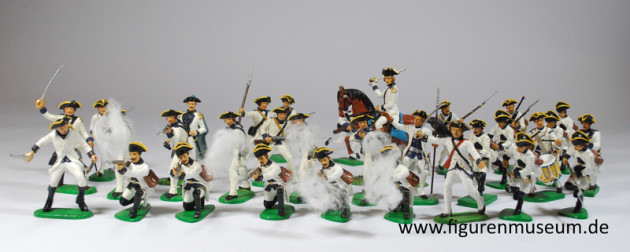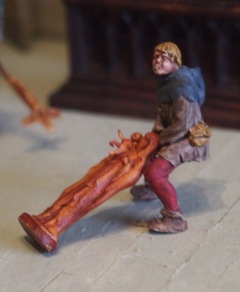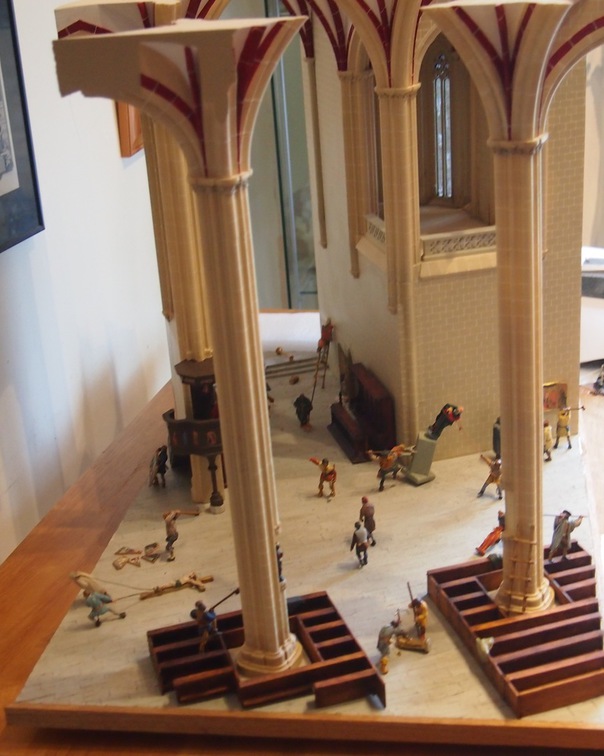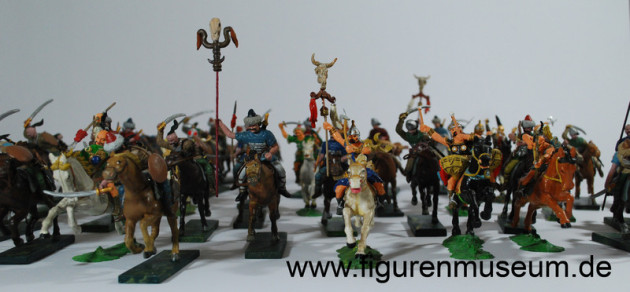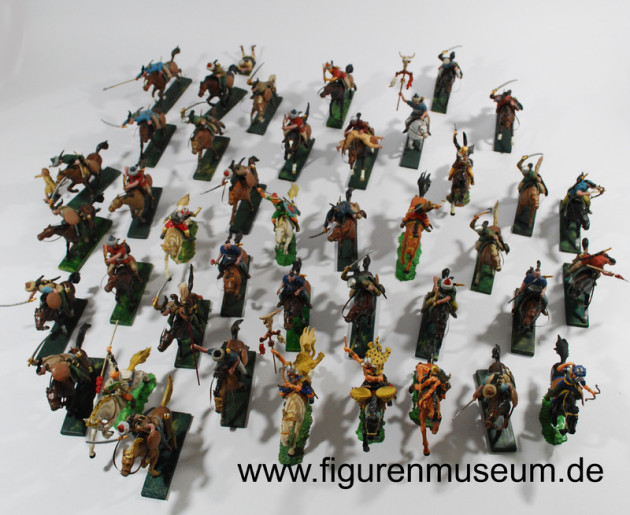
Die Deutschen "2000 Jahre deutsche Geschichte" mit Miniaturen
"Die deutsche Schlacht - Yorktown 1781"
Yorktown 1781: Die entscheidende Schlacht des amerikanischen Unabhängigkeitskrieges, in deren Folge Großbritannien kapitulierte, ging als die "deutsche Schlacht" in die Geschichte ein. Der Hauptteil der beteiligten Soldaten waren Deutsche, so auf Seite der Briten Truppen aus Hessen, Ansbach und Bayreuth. Ähnlich große Kontigente auf französischer Seite u. a. das deutsche Regiment Royal Deux-Ponts. Bei den Amerikanern dienten in der Division von Steubens auch zahlreiche deutsche Auswanderer.
Iconoclastic Acts in the Church of St. Mary, Mühlhausen 1525
The rejection of religious imagery was not exclusive to the Protestant Reformation in Germany — a theological struggle had raged in Byzantium where between 726 and 843 over the religious devotion
to images. Religious icons were seen in some eyes as ‘craven images’ to be removed from places of worship and was particularly pronounced in the region of Alsace during the Reformation with the
Anabaptist strand practising the widespread destruction of religious images. In Central Germany two important reformist theologians who had been drawn to Martin Luther’s Protestant teachings were
Andreas Bodenstein von Karlstadt (aka Andreas Karlstadt) and Thomas Müntzer. However, their interpretation of Protestantism was more radical. Karlstadt, for example, worked towards reforming the
church service during Luther’s forced absence by wearing secular clothing, removing all references to sacrifice, and successfully requesting the re-moval of all imagery from churches (aka iconoclasm)
in the diocese of Wittenberg. The radical cleric Thomas Müntzer made his base in of Mühlhausen in Thuringia an Imperial city in a state of some political and religious turmoil. Before Müntzer ‘s
arrival there had been numerous iconoclastic acts in and around the city and as groups of citizens and peasantry began to mobilise and articulate their demands against the nobility and the clergy
there was vandalism in a number of monasteries in the city. This manifested itself in the sequestration of food and wine and beer and the removal of the monastic treasures. One ecclesiastical
institution to be singled out for attack was the great Church of St. Mary which towers over the city.
The church was Teutonic order but had received a new pastor from Weimar —a certain Johannes Laue - who showed contempt for any kind of religious imagery. On the 6th January 1525, the Church fell prey
to acts of iconoclasm led apparently by the new pastor who threw the tabernacle containing the host from the altar and removed religious paintings which he set fire to in front of his house.
Sculptures adorning the main portals were destroyed as were numerous religious artefacts within the building. itself. It is claimed that by May — the height of the peasant insurrection in Thuringia —
the Church of St Mary had been virtually cleared. The Modell will be issued in the museum of "Schloß Lindenbühl in Muehlhausen.
This project has been a real collective effort and acknowledgements are due to a number of collaborators:
Concept and Research: Doug Miller, 3D Visualisation and computer modelling: Iwan Peverett, (formerly University of Northumbria), Additional computer modelling: James Thomas; (University of
Northumbria)
3D Print and Realisation in wood: James Thomas; Iain Jeffrey (University of Northumbria)
Design and sculpture of figures and church objects: Doug Miller, Figure moulding and casting: John Laing
Figure artwork : Michael Burgin, Additional figure artwork : Doug Miller, Model construction: Doug Miller
Exterior artwork: Pete Watson Interior artwork: Doug Miller and Mick Burgin
"Attila und der Sturm über Europa - die Schlacht auf den Katalaunischen Feldern 451 n. Chr."
Wir starten unsere neue Serie mit dem Beginn der Völkerwanderung, ausgelöst durch den Einbruch der Hunnen um 375 n. Chr. und der Entscheidungsschlacht auf den Katalaunischen Feldern 451 n. Chr. Die Germanen dominierten nach dieser Zeit die Geschichte Westeuropas und waren die Herrscher zwischen Spätantike und Mittelalter. Sie sehen die Hunnenserie von Hausser Elastolin und Mini-Forma, die Szene wurde mit 40 Figuren im Maßstab 1:24 umgesetzt. 445 n. Chr. wurde Attila Alleinherrscher der Hunnen. Im Jahr 450 schwenkte Westrom nach einer neutralen Politik auf eine hunnenfeindliche Haltung um. Im Jahr 451 fallen die Hunnen in den Norden Galliens ein und richten schwere Verwüstungen an. Unter Führung des weströmischen Feldherrn Aetius besiegen vereinigte römische, westgotische und fränkische Truppen Attila und die Hunnen auf den Katalaunischen Feldern in Gallien. Im Jahr 455 erobert Geiserich König der Vandalen und Alanen Rom und lässt die Stadt 14 Tage plündern. Im Jahr 476 kommt für Rom schließlich das Ende, ein vorwiegend aus germanischen Söldnern bestehendes Heer setzt Kaiser Romulus Augustus ab und wählt den germanischen Skiren Odoaker zum Heerkönig.
